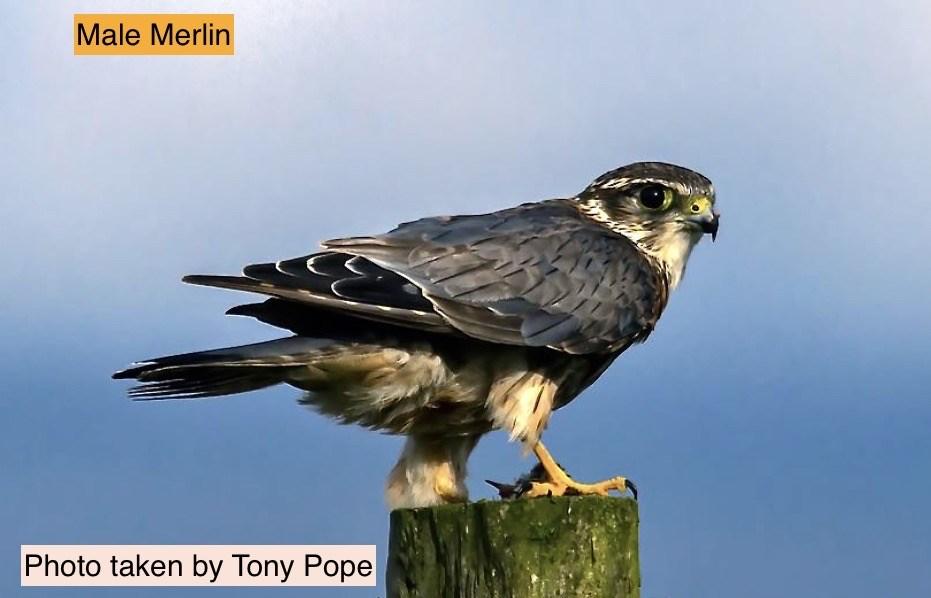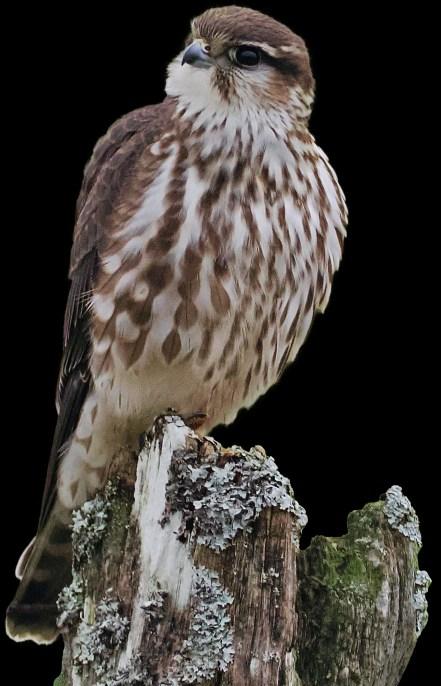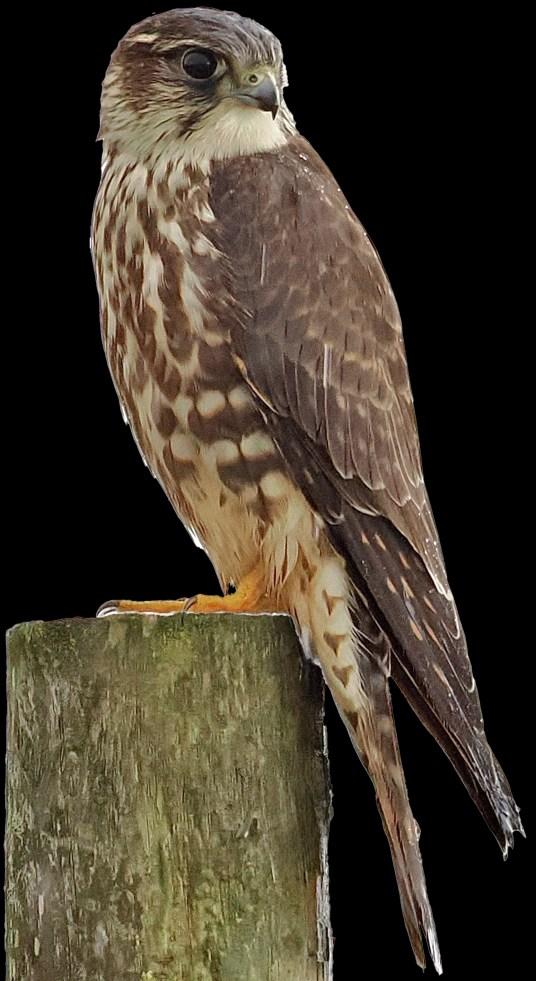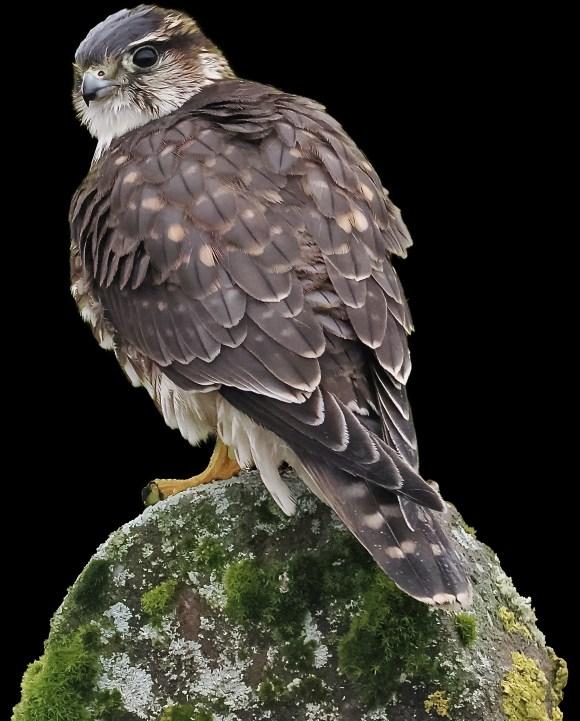
3 minute read
Nature's Corner
Merlin, the Wizard of the moor.

Such an iconic bird of the uplands, the smallest and one of the rarest of our UK birds of prey; with only around thirteen hundred pairs in the British Isles, the Merlin is seldom seen although I’m sure many will have passed one by and even spotted this secretive creature perched on a fence post or glanced at one of these handsome beauties chasing a Skylark or Pipit without realising what it
Yes, the Merlin, considered somewhat of a bird photographer’s Holy Grail is a small falcon, the female being larger than the male as is often the case with our Birds of Prey and is about the size of a Collared Dove. She has brown plumage with a cream belly and breast streaked with darker brown, a small beak with a yellow base and dark eyes, unlike the bright orange eyes of a Sparrowhawk. The arguably more handsome male is little bigger than a Blackbird and has a slate/blue back and beautifully marked breast with buff to orange feathers and darker brown streaks, a barred underwing with dark outer wings.
I’ve probably seen ten or so in my 6 years of going out regularly spotting birds on the Denbigh moors with the majority being settled on a fence post alongside or close to one of the moorland roads. They have a habit of taking off and almost magically disappearing in an instant, whereas they tend to fly at great speed low to the ground and often hurtling down into the longer Marram grass and heather on the moorland which is their home. Their wings are shorter in relation to their size compared to most falcons and their manoeuvrability is a spectacle to behold.

I have seen them chasing a small bird over the moor on a few occasions, following and mirroring its every move in flight, hoping to gain an advantage and grab the hapless victim from behind. I watched this on one occasion near the Sportsman’s Arms (as was) whereby the young Merlin in this case was chasing a Meadow Pipit, which flew into a small tree at the roadside, the Merlin flapped and moved around within the tree in an attempt to catch the little fellow who just kept on moving to another part of the tree, eventually evading capture and flying off sharpish much to the Merlin’s bewilderment!
Merlin nest during May and June amongst the heather on the ground or in an old disused crow’s nest and will lay usually 4-6 eggs which are rusty brown and speckled and therefore well camouflaged, they incubate for 30 days. Youngsters are similar in appearance to the female once fledged with the males being smaller and getting their full colours and becoming sexually mature after 12 months.

During the winter months, Merlin will move down to the coast following the smaller prey species such as Larks and Pipits but will take any small bird it can get it’s talons on, a formidable hunter indeed.
Always a treat to see and photograph and certainly for me anyway, very much the bird to go out looking for, as whilst doing so, you will see so much more along the way..











